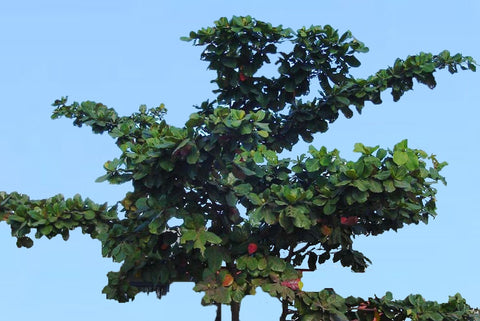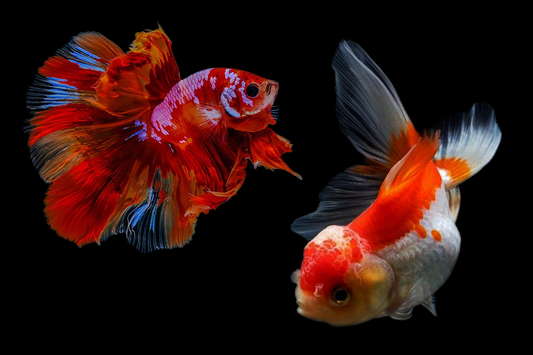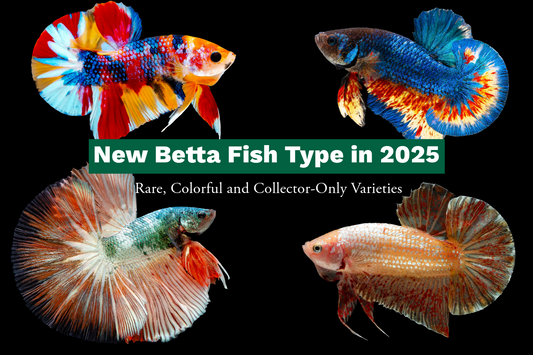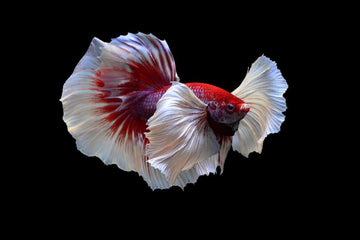Revitalize Your Betta Fish with Indian Almond Leaves: Uncovering the Benefits and How to Use Them

What are Indian Almond Leaves?
Indian almond leaves, also known as Terminalia catappa, are a popular natural remedy used in aquariums for betta fish and other aquatic creatures. These leaves contain various compounds that can help to prevent and treat common health issues, such as fin rot and bacterial infections.

Almond Tree
The Benefit of Indian Almond Leaves?
One of the key benefits of Indian almond leaves is their ability to release tannins into the water. Tannins are organic compounds that give the water a brownish tint and provide a range of benefits for bettas. Tannins can help to reduce stress in fish by mimicking the natural environment of their native habitats, which are often dark and shaded. This can lead to a reduction in the incidence of stress-related diseases, such as ich and velvet.
In addition to reducing stress, Indian almond leaves have antibacterial and antifungal properties that can help to prevent and treat diseases in betta fish. The tannins released by the leaves have been shown to inhibit the growth of harmful bacteria and fungi, including those that cause fin rot and other common betta diseases.
Indian almond leaves also provide a natural, realistic look in your aquarium. They can create a lush, jungle-like environment that mimics the natural habitat of bettas. They can also provide a source of food for microorganisms that your betta may eat, such as infusoria and other small organisms.

Dried Almond Leaves
Discover the Importance of Drying Indian Almond Leaves Before Using Them in Your Aquarium Tank
Indian almond leaves need to be dried before using them in an aquarium tank to remove any impurities and to prevent them from rotting and introducing harmful bacteria into the aquarium water. Drying the leaves also helps to preserve their beneficial properties, such as their ability to release tannins into the water, which can create a natural, stress-free environment for fish and other aquatic life.
Additionally, dried Indian almond leaves are more convenient and easier to handle compared to fresh leaves, which can be difficult to store and may quickly decompose in the water. Overall, drying Indian almond leaves before using them in an aquarium tank is essential to ensure their effectiveness and safety.

Tanning Water
How to use Indian almond leaves for your aquarium?
-
Choose high-quality Indian almond leaves: It's important to choose high-quality Indian almond leaves to ensure that they are free from pesticides or other harmful chemicals. You can purchase Indian almond leaves from local pet stores or online retailers.
-
Prepare the leaves: Before adding the leaves to your aquarium, rinse them thoroughly with warm water to remove any dirt or debris. You can also soak the leaves in a bucket of water for a few hours to help release the tannins.
-
Add the leaves to your aquarium: Place the leaves in your aquarium, making sure that they are fully submerged in the water. You can also attach them to a rock or piece of driftwood using a fishing line or rubber band.
-
Wait for the leaves to release tannins: Indian almond leaves will release tannins into the water gradually over time. You may notice a slight discoloration of the water, which is normal and can help to create a natural, stress-free environment for your fish.
-
Replace the leaves as needed: Depending on the size of your aquarium and the number of leaves used, you may need to replace the leaves every few weeks to maintain the desired level of tannins in the water.
By following these steps, you can effectively use Indian almond leaves in your aquarium to improve the health and well-being of your fish and aquatic plants. Remember to always monitor the water quality and health of your aquarium inhabitants, and make adjustments as needed.
No comments











0 comments